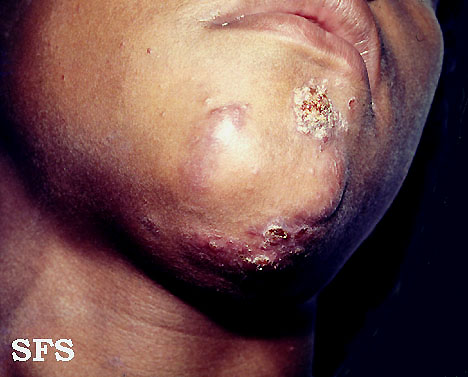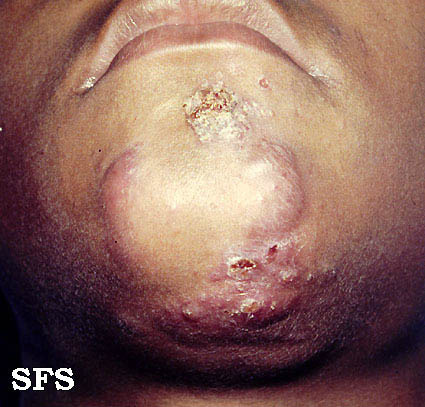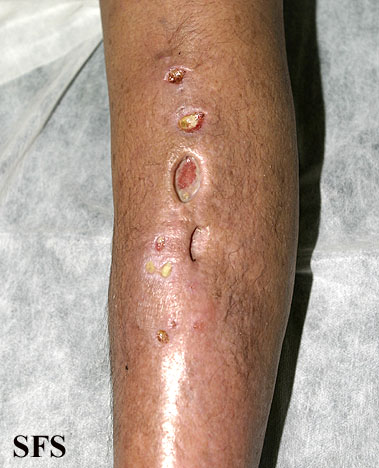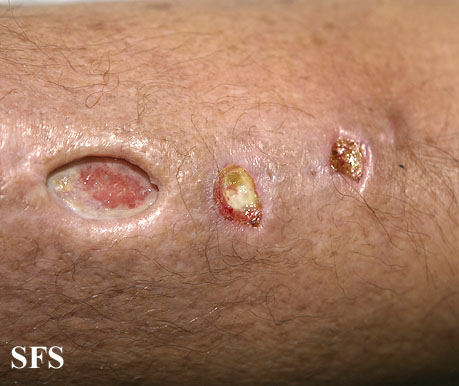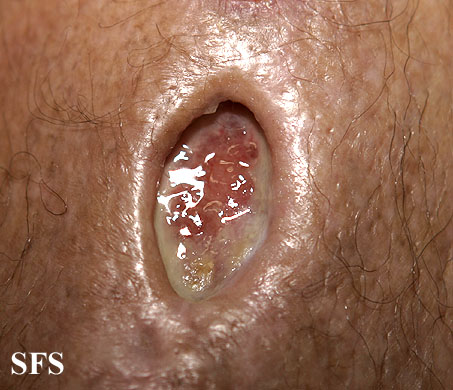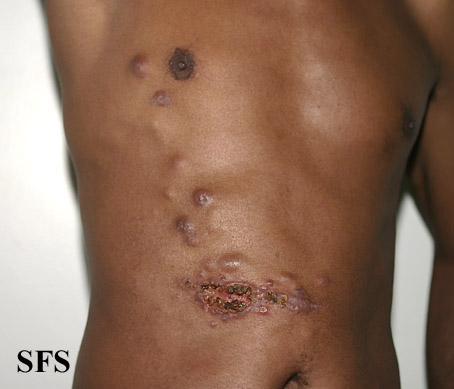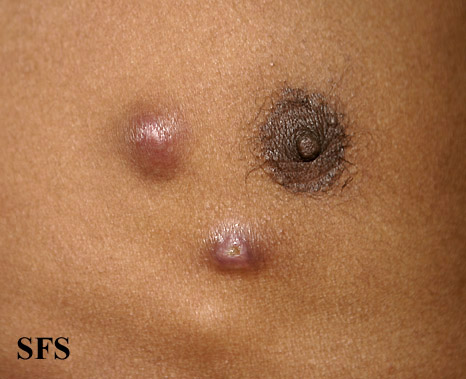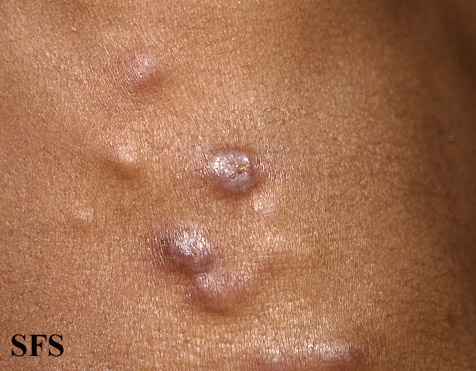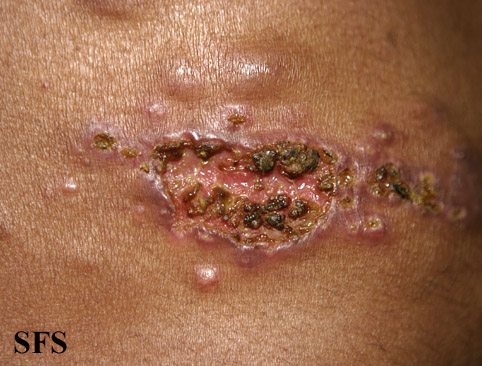Sporotrichosis physical examination: Difference between revisions
Jump to navigation
Jump to search
(→Skin) |
(→Lungs) |
||
| Line 10: | Line 10: | ||
===Skin=== | ===Skin=== | ||
* | * Initial nodular lesion at inoculation site | ||
** Small and painless | |||
** Pink to purple coloration | |||
* Nodular lesion grows when left untreated | |||
** Boil-like | |||
** Ulceration | |||
** Drainage | |||
* Older distal lesions will likely ulcerate and ooze, while proximal lesions manifest as nodules and undergo the same cycle. | * Older distal lesions will likely ulcerate and ooze, while proximal lesions manifest as nodules and undergo the same cycle. | ||
| Line 18: | Line 25: | ||
===Lungs=== | ===Lungs=== | ||
===Heart=== | ===Heart=== | ||
===Abdomen=== | ===Abdomen=== | ||
| Line 30: | Line 33: | ||
===Extremities=== | ===Extremities=== | ||
* | * Cutaneous sporotrichosis lesions are characteristic to upper extremities | ||
** Lesions on fingers | |||
** Lesions on arms | |||
** Lesions on hands | |||
===Neuromuscular=== | ===Neuromuscular=== | ||
Revision as of 15:44, 26 January 2016
|
Sporotrichosis Microchapters |
|
Diagnosis |
|---|
|
Treatment |
|
Case Studies |
|
Sporotrichosis physical examination On the Web |
|
American Roentgen Ray Society Images of Sporotrichosis physical examination |
|
Risk calculators and risk factors for Sporotrichosis physical examination |
Editor-In-Chief: C. Michael Gibson, M.S., M.D. [1]
Physical examination
Appearance of the Patient
Vital Signs
Skin
- Initial nodular lesion at inoculation site
- Small and painless
- Pink to purple coloration
- Nodular lesion grows when left untreated
- Boil-like
- Ulceration
- Drainage
- Older distal lesions will likely ulcerate and ooze, while proximal lesions manifest as nodules and undergo the same cycle.
HEENT
Neck
Lungs
Heart
Abdomen
Back
Genitourinary
Extremities
- Cutaneous sporotrichosis lesions are characteristic to upper extremities
- Lesions on fingers
- Lesions on arms
- Lesions on hands
